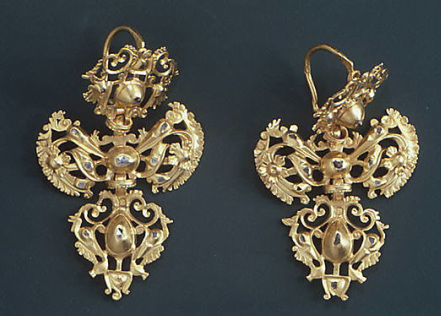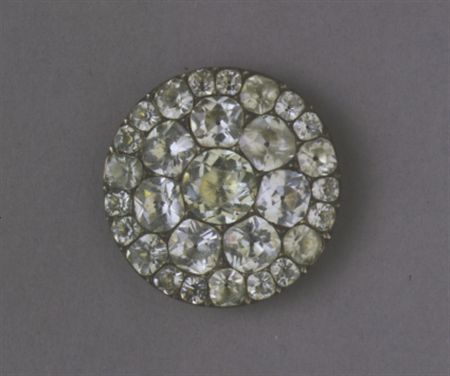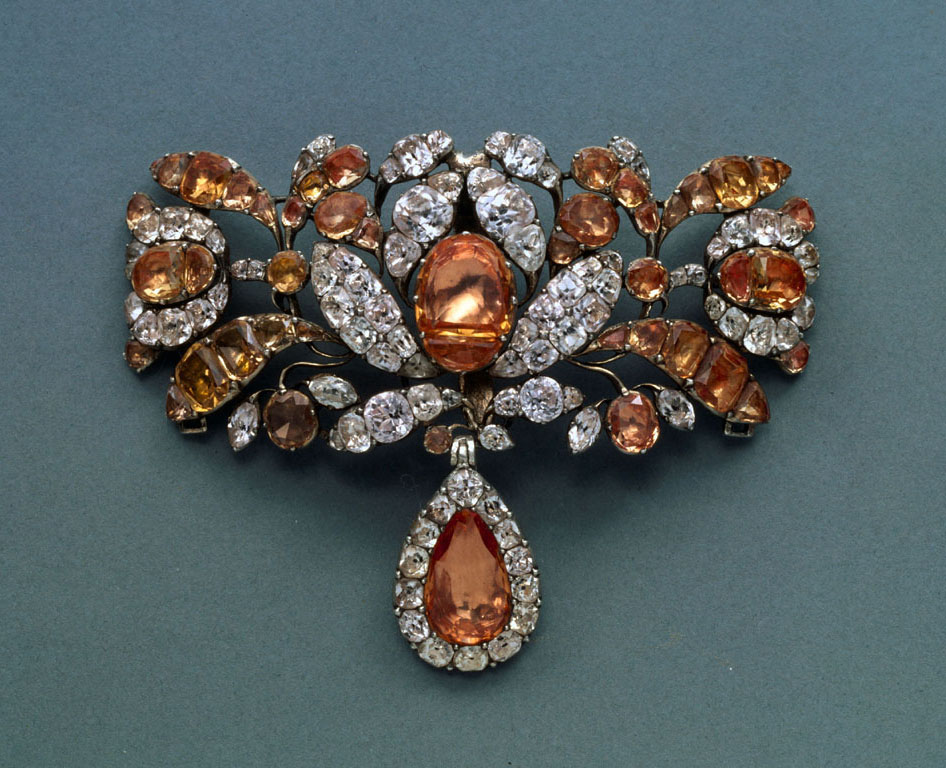Earrings |
Buttonwhite metal, minas novas
eighteenth century Portugal ? Museu Nacional do Traje e da Moda, Lisbon Buttons are common in inventories, often made of gold. This example contains what are called "minas novas," meaning "new mines." This name was given to a variety of gems found in Minas Gerais. Click here for more information. |
Bodice Ornamentgilded silver, topazes, minas novas
second half of the eighteenth century Museu de Évora This piece of jewelry which would have been attached to a woman's bodice contains three of the many precious resources from Minas Gerais: gold, minas novas and topazes. Click here for more information. |
|
Copyright 2018 Rachel A. Zimmerman
|



